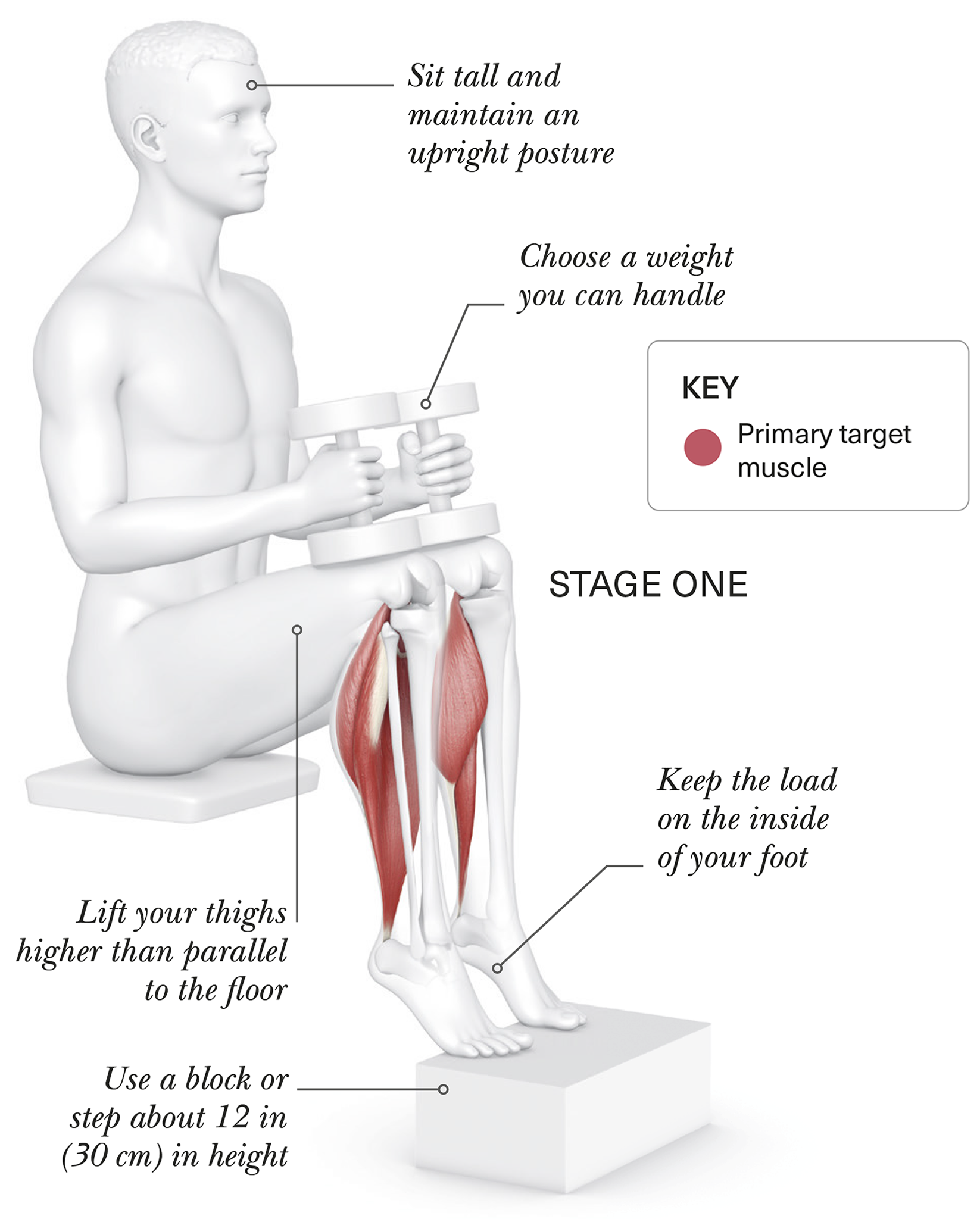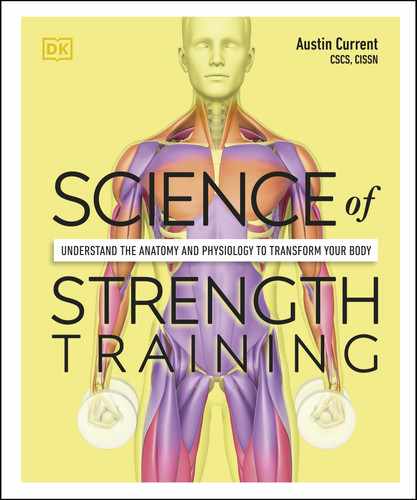 variations
variations
Strengthening the calf helps maintain a healthy and stable knee joint. As with the calf raise on the previous pages, these variations target the gastrocnemius and soleus muscles and work the Achilles tendon.
seated CALF RAISE
Performing this exercise in a seated position biases the soleus muscle over the gastrocnemius, because your knees are flexed. This seated calf raise adds variety to your routine whether you’re at home or in the gym.
preparatory stage
Sit tall with your feet hip-width apart and resting on the balls of your feet on a block or step in front of you. Rest the dumbbells on your knees.
STAGE ONE
Breathe in to engage your core. Breathe out as you contract your calves to raise your heels, driving your feet up and ankles forward, with control.
STAGE TWO
Breathe in and slowly lower your heels, keeping your ankles in line with your knees throughout. Pause at the bottom of each rep. Repeat stages 1 and 2.

n Double-tap image to read the labels
single-leg CALF RAISE
No extra weights are needed in this unilateral variation because supporting your bodyweight on one leg during its calf raise is enough load. Be sure to work each leg evenly.
preparatory stage
Stand tall. Place the ball of one foot on the step and wrap your nonworking leg around the back of the other. Lower your heel into the starting position.
STAGE ONE
Breathe in to engage your core. Breathe out as you raise your heel as you contract your calf. Have a support nearby to hold if balance is an issue.
STAGE TWO
Breathe in and lower your heel in a controlled manner, keeping the load on the inside of your foot. Hold the bottom position, then repeat stages 1 and 2.

n Double-tap image to read the labels
POSTERIOR VIEW
Achilles tendon
The Achilles tendon provides elasticity and shock absorbance for the feet and is involved in plantarflexion. Active in walking and running movements, this tendon is strong enough to withstand huge tensile forces—up to 10 times the body’s weight.
“Training the calf muscles not only adds size and strength to the lower leg, but also aids in increasing stability at the knee.”
LEG PRESS CALF RAISE
This variation emulates the calf raise but allows for your body to be in a more stable position and without any load on your spine. It’s a great alternative for anyone who may feel unstable or uncomfortable using a standing calf raise machine.
preparatory stage
Set the weight. Sit on the seat with the balls of your feet hip-width apart on the platform and your heels lowered.
STAGE ONE
Inhale to engage your core and pull yourself down into the seat. Breathe out as you push the balls of your feet onto the platform so your heels rise.
STAGE TWO
Breathe in and lower your heels to the starting position, maintaining control throughout. Pause at the bottom, then repeat stages 1 and 2.

n Double-tap image to read the labels
![]() Ankle dorsiflexion and plantarflexion
Ankle dorsiflexion and plantarflexion
The muscles of the ankle are important in their roles of dorsiflexion and plantarflexion. They also work alongside the muscles of the foot to stabilize gait and ensure healthy function of both the foot and the ankle. Proper training of the gastrocnemius, soleus, and other muscles of the lower leg help create a healthy movement pattern and prevent injuries in the long term.

n Double-tap image to read the labels
LATERAL VIEW
